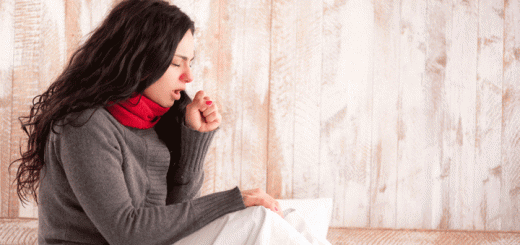
The arrival of colder season (in areas where applicable) is often accompanied by coughing and sneezing. While colds and flus are often deemed as the culprit, did you know that pertussis may share similar symptoms as a common cold?
Sufferers of pertussis, or whooping cough, lament the frustrating and slow recovery (hence the name “100 day cough”). Teenagers and adults whose immunity to the pertussis vaccine have waned may be affected. The group most susceptible, however, are infants under 6 months who have not received full courses of pertussis vaccine. In many cases, babies often get pertussis from their parents and caregivers–half of which require hospital care as they are more serious and can be fatal.
Those severely impacted by the disease have coughing fits followed by a classic whoop, much like the sounds of many “hold-your-breath” contests in the summer month pools.
What is it?
Pertussis is caused by a highly infectious bacterium called Bordetella pertussis. Under the microscope, B. pertussis is immotile and somewhat round (range from rod-shaped, oval, to round), and has a protective capsule. It is a strict human pathogen.
Transmission occurs through inhalation of infected droplets. From there, B. pertussis colonize the ciliated cells in the respiratory mucosal tract. Cilia are little microscopic hairs (not to be confused with giant nostril hairs) responsible for moistening and protecting your airways by filtering unwanted particles to your throat to be swallowed.
Subsequently, B. pertussis secrete a variety of toxins, drawing inflammation and damage in the host airways. In addition, damaged airways compromise the immunity of the host and further increase host sensitivities to other offending air particles such as dust and fumes. The most susceptible populations include infants 6 months and under, especially in unvaccinated and developing areas.
Symptoms
Symptoms usually appear within 5 to 10 days post exposure, extending to as long as 3 weeks. During stage one, pertussis may be mistaken with a common cold, as they usually begin with runny nose, sneezing, and cough or fever. In babies, coughing may not be present and are likely to be replaced by apnea (pause in breathing). To distinguish between a cold, flu, and pertussis, please visit here.
In stage two, coughing fits followed by “whooping” occur in conjunction with vomiting and exhaustion. The “whooping” occurs due to the exhausting nature of the coughs–which deplete air from the lungs, causing the need to “whoop” and inhale loudly for oxygen. These coughing fits can last for 10 weeks or longer.
In the recovery phase, the cough slowly lessens in intensity, but may return due to other respiratory infections.
What You Can Do
Prevention is key. Babies and children should receive the complete series of the DTaP (diptheria, tetanus, acellular pertussis) vaccine, which includes the 4 doses at 2, 4, 6, and 15-18 months, and subsequent booster shots at 4 to 6 years old. Immunity is compromised when the full series of vaccines is not completed.
Instances where children under 7 years old shouldn’t be vaccinated or should wait include:
- when children are suffering from moderate to severe sickness (ask your doctor)
- allergies to previous doses of DTaP (ask your doctor)
- prior history of brain or nervous system impact within 7 days after DTaP dose (ask your doctor)
In addition, consult the doctor if the child experiences the following after DTaP dose:
- seizures
- nonstop crying for 3 hours or more
- fever over 105℉
For babies under 2 months of age, parents and other caregivers aged 11 to 64 should follow the CDC recommendation of getting the Tdap (tetanus, diphtheria, acellular pertussis) vaccine to prevent transmission to infants. Consult the doctor if you have severe allergic reactions to Tdap.
Much research is being done for greater vaccine efficacies. For additional information on DTaP vaccines, please visit here.
For those who are affected, antibiotics are prescribed to lessen the duration of the illness. In this case, follow the doctor’s advice on finishing the antibiotic course if treated at home. In addition, lowering the irritant levels in the air (dust, fumes, etc) can help to not trigger as many coughing fits. Use of vaporizers will also help. Cough medicine is not useful unless prescribed by the doctor. Practice good hygiene and good coughing “etiquette” to prevent further transmission to other members (this is proper etiquette).
If hospitalization is required, various procedures will be done to ensure clear breathing (mucus suctioning) and proper feeding and hydration (IV fluids).
Sources:
http://www.cdc.gov/pertussis/about/index.html
http://www.who.int/topics/pertussis/en/
https://www.soundsofpertussis.com/
http://www.immunize.org/vis/dtap.pdf
http://www.ncbi.nlm.nih.gov/books/NBK7813/
https://microbewiki.kenyon.edu/index.php/Bordetella_pertussis
https://www.dhs.wisconsin.gov/influenza/coldflupertussis.htm
—
Like what you see? Sign up to join Human Health Project, a community-based, not-for-profit website focused on using peer to peer health support for a healthier you.
—





Leave A Comment
You must be logged in to post a comment.